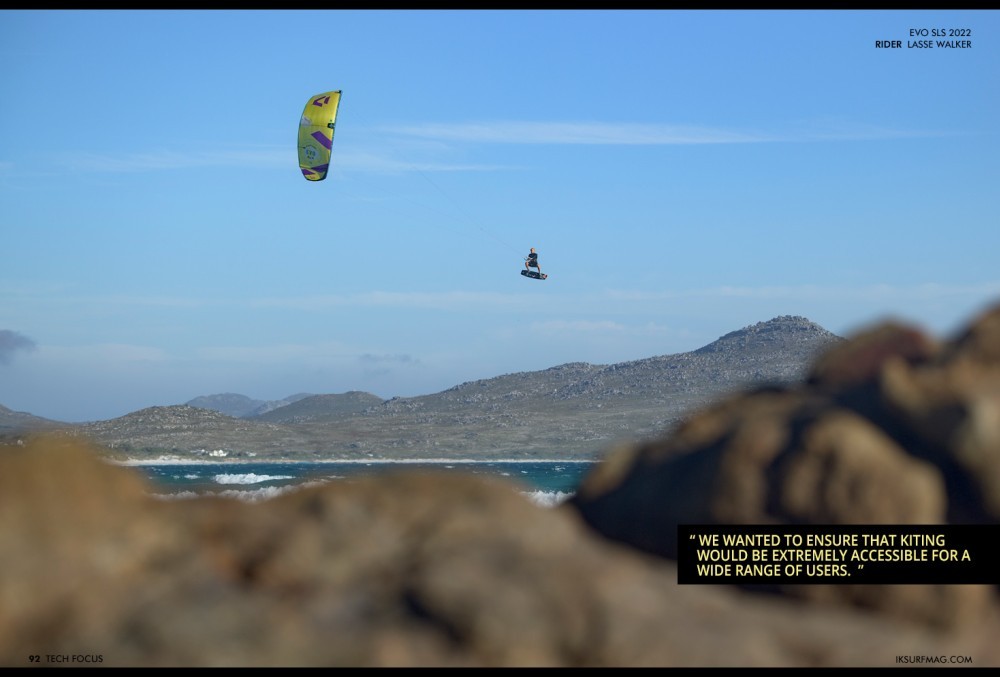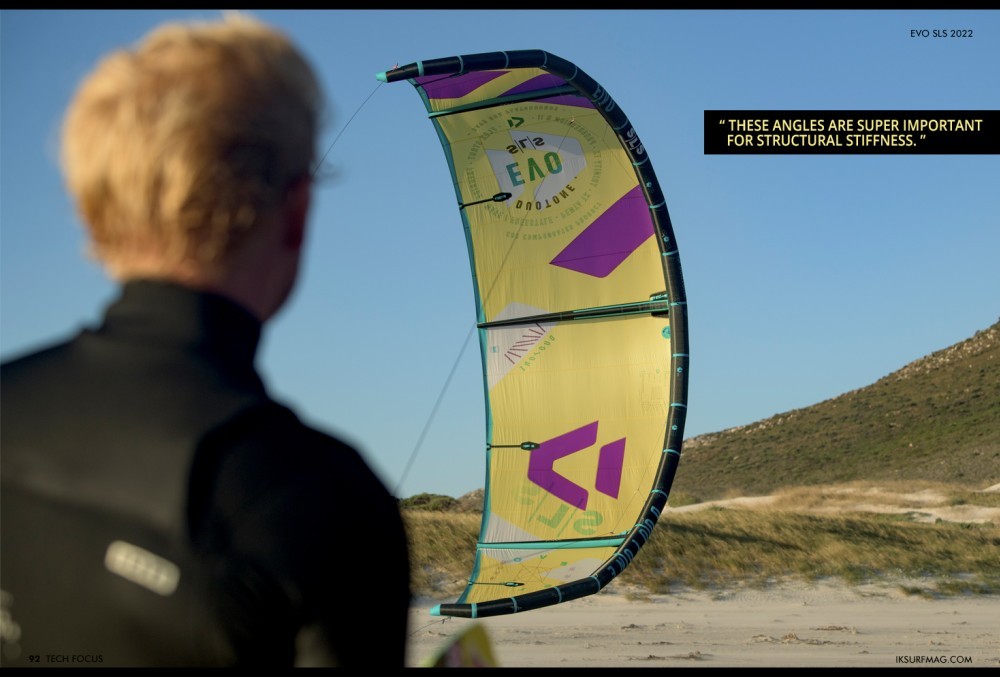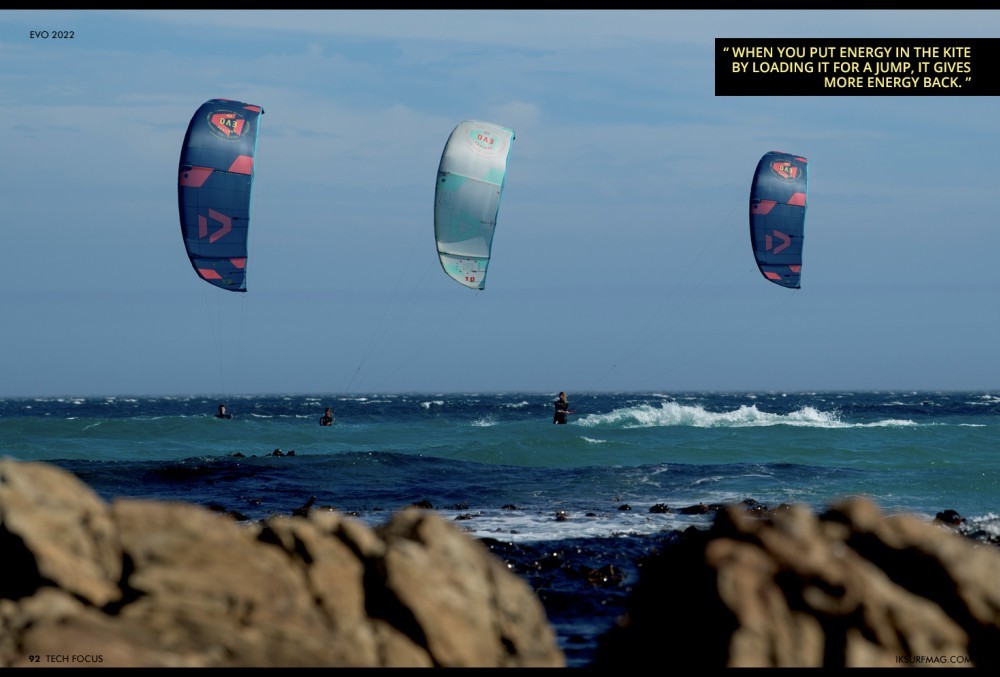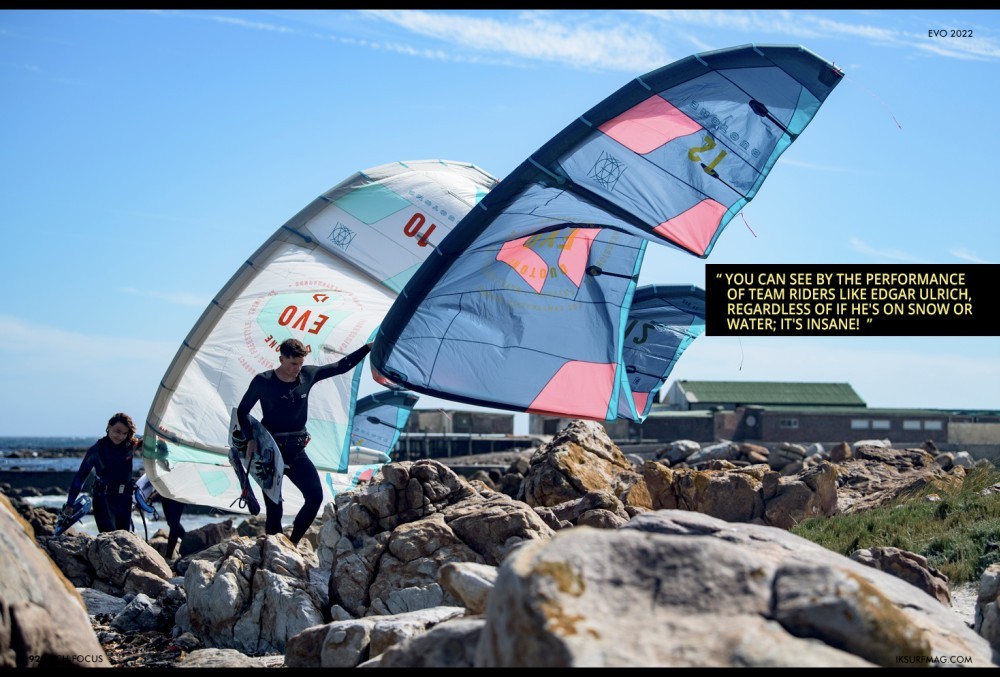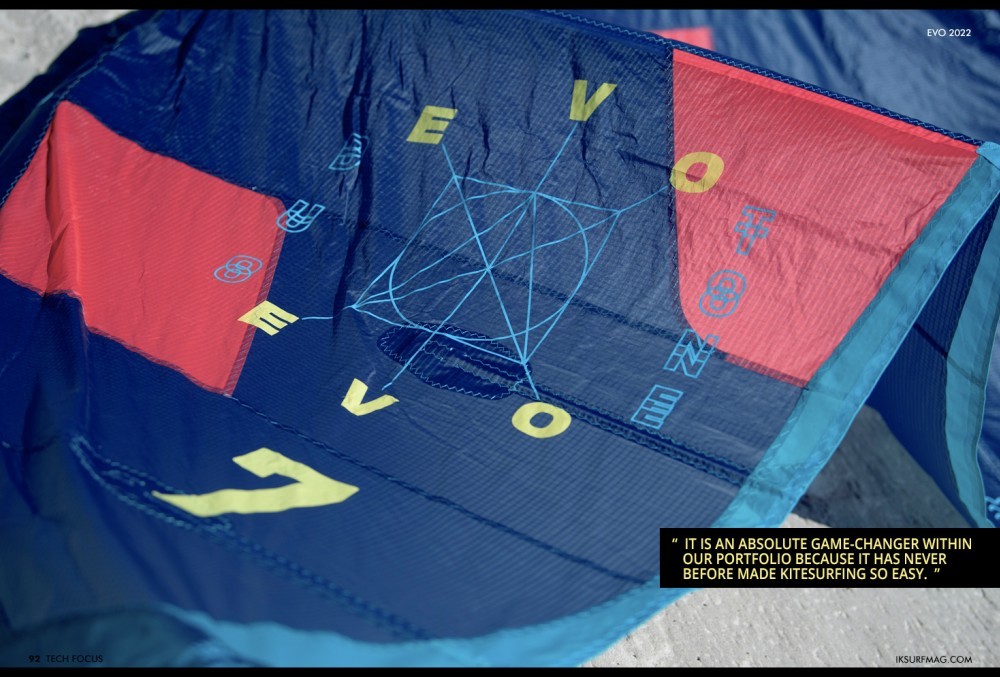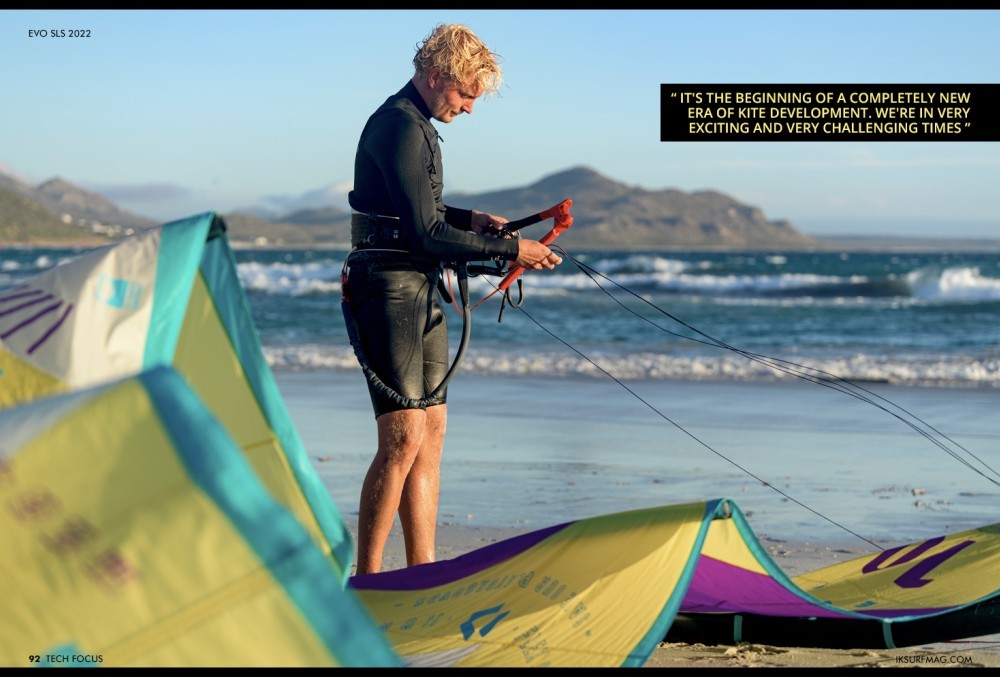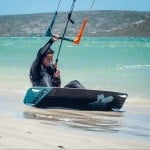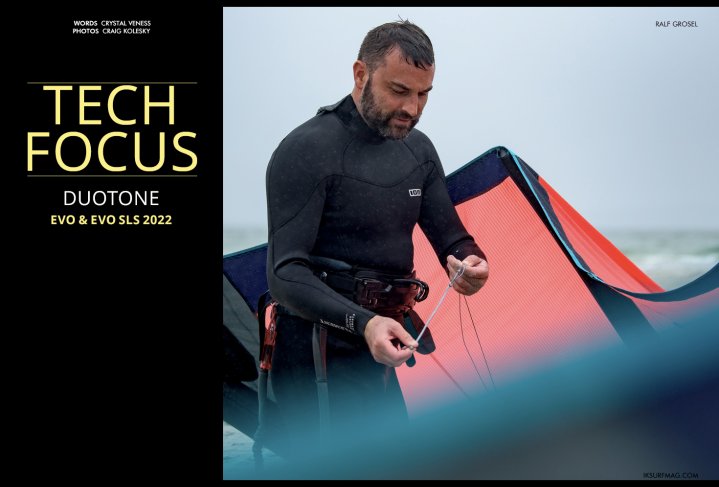
Tech Focus: Duotone - EVO & EVO SLS 2022
Issue 92 / Thu 7th Apr, 2022
The Evo has been the ultimate all-around kite in the Duotone lineup for 15 years. With the recent addition of the Evo SLS, you might be wondering what the key differences are. We spoke to designer Ralf Grosel, who filled us in on what sets the 2022 Evo SLS apart, and which kite might be right for you. Find out more in this IKSURFMAG exclusive!
The Evo has been a part of the Duotone line-up since 2007/2008. Ralf, how long have you been working on the Evo?
The Evo was the first tube kite I designed for Duotone Kiteboarding (previously known as North Kiteboarding), and development first began at the beginning of 2006.
What were the original design goals in the early versions of this kite?
The design goals were quite clear: create the ultimate all-around kite. In this regard, the Evo has never changed within its position in the line-up. In the early stages, we placed a lot of focus on a self water relaunch to satisfy the schools and ensure that students do not face any obstacle during the learning process. We wanted to ensure that kiting would be extremely accessible for a wide range of users.
While the Evo has had 15 versions, the Evo SLS is a newer product in the line-up, in only its 2nd version. So, what's new in the Evo SLS 2022?
The Evo SLS has been entirely developed around the new Penta TX material, which is quite different compared to standard Dacron. This also means that the resulting flight characteristics are quite different, especially when we introduced the first version of the Evo SLS.
We made a very sporty kite, which was very reactive and snappy, which, naturally, required quite a high level of riding skills to extract the best out of that concept. Based on the market feedback, we have worked quite hard on achieving high performance in the easiest possible way for the end-user. The new design goal was to make the kite more accessible and more intuitive to fly and steer while sharpening the connection between the kite and the rider.
What are the key performance improvements in the 2022 version over the Evo SLS 2021 version? Can you go into some detail about these developments?
To make the performance of the Evo SLS 2022 more accessible, we had to make the connection and interaction between the rider and kites. I did this by changing some variables, especially the arc. I have flattened the radius, which gives you a different sheet-in-and-go feeling. It increases the steering forces slightly and the sheeting forces by just the right amount to feel more connected with the kite.
Of course, when you change one parameter, you always have to adjust some other variables. For example, the tip geometry has to be changed, and these angles are super important for structural stiffness. The way the kite handles in the turn and through the turn has been adjusted, the tip strut tension settings, and some of the other key features that you typically play with when changing the flight characteristics of a kite.
Does the SLS version simply use more premium materials than the original Evo, or are there changes in the actual design and shape? Why is there a need for a different approach to the Evo and Evo SLS?
Well, let's put it this way: The Evo original is a completely new design. And, yes, it uses the more classic materials, but in the best possible way. It's very important to understand that all materials have their pros and cons.
The Penta TX creates very sporty, snappy kites. On the other hand, the standard Dacron has more softness and smoothness, which is great for the weekend warrior or the rider who wants to have a very accessible kite. This is related to the torsion stiffness of the material. It's pretty much similar to the spring settings on your car; if you go for a sports car, then you have harder spring settings, and you'll feel more connected to the road. If you want to have a cruiser, these springs are generally softer, which increases comfort. With the kite materials, you immediately feel the difference when working on Penta TX and then going back to normal Dacron.
With the key learnings from the last years of development, I was able to reconsider some of the flight characteristics of the Evo original and extract the best out of it. I have added different bridle geometries to the Evo original to ensure that this kind of softness and twist in the kite is controlled so that the kite is extremely smooth and accessible. The Evo original stands for being the all-around kite in the industry. This product has to come with a certain easiness and an intuitive, common-sense way of flying.
When using different kinds of materials, if you change one parameter, you have to adjust all the others. But, this is simply the result of using different materials. They really do require a completely different set of parameters to find that sweet spot for the material itself.
The Penta TX material has had a lot of positive attention! So, what makes the Penta TX material so unique?
That's quite simple to answer - it adds performance, sheer flying performance, jumping height, turning performance, and light wind ability because of the reduced weight.
Penta TX is not your typical Dacron material; it is manufactured differently and applies a different kind of coating. It has a way higher structural stiffness, especially in a diagonal direction. It's like a spring that uses a different spring load. When you put energy in the kite by loading it for a jump, it gives more energy back. Now, that makes the kite more snappy and more aggressive, but also more challenging to ride, in some aspects. As I've mentioned before, I would recommend the Evo SLS and the Dice SLS to skilled riders with at least a few years of experience.
Tell us a bit more about the Flex Struts. How do they work, and how do they improve kite performance?
I had initially developed the Flex Strut for the Juice original, and for one important reason: to make a big kite more responsive. The Flex Strut helps to deform the tip area. So, for example, if you fly the kite, you start to deform the tip on the right side. The kite also starts to deform on the left side, which is even more important for turning speed. So, the kite pitches forward on the left side, and the Flex Strut is developed in a way that it is has a very high pitch moment. It starts to rotate over the leading edge, which makes the kite accelerate. You feel this acceleration when the kite comes around and starts to hook - or pull you. This is the power you feel in the kite.
The Flex Strut was extremely helpful and essential to make a big kite feel smaller and way more fun. It's a very important design feature; however, this feature does not work for all different types of kite concepts. We are constantly changing the functionality and the flex of the Flex Strut according to the kite requirement. The Dice SLS, for example, does not require any Flex Strut at all. If it had that Flex Strut, it would be too nimble and too snappy in the turning behaviour, which is not a good feature for a very C-shaped kite. On the other side, for the bigger kites, especially in the bigger sizes, it makes sense to apply this logic to the kite and make the handling characteristics as smooth, predictable, and fast as possible to give you the best handling performance.
Performance-wise, where does the Evo SLS 2022 excel the most?
The Evo SLS is still an all-around kite, which is one of its key features. The kite jumps super well. You can see by the performance of team riders like Edgar Ulrich, regardless of if he's on snow or water; it's insane! The kite is super intuitive in the loop, and it catches great, which is one of the most important features in a looping kite.
It also works fantastically on the foil, especially on the race foil, if you really want to shoot over the lake in light wind conditions. If you are not looking particularly for unhooked performance, then the Evo SLS is THE all-around kite that suits pretty much 90% of all riding styles.
Is this kite targeted to more advanced riders? Would you suggest a beginner kiter choose a different model?
Yes, definitely. The Evo SLS is targeting a more advanced rider, and as mentioned before, you should have three years of good kite experience on your shoulders to extract the best performance out of this concept. Otherwise, I recommend the Evo original, especially the new model. It is an absolute game-changer within our portfolio because it has never before made kitesurfing so easy. The accessibility and overall performance have never been better and easier than with this super intuitive and straightforward kite.
You've just wrapped up another test trip in South Africa! Are you allowed to share any details on the products you were testing? Any exciting developments you share with us?
South Africa has been fantastic, as it is every single year. And yes, for the entire kite industry, it's the only way to escape horrible European winter and progress with the development phases we need to go through. We are trying to push the boundaries every single year.
The past few years have already been very exciting with introducing the Penta TX from Challenger Sail Cloth and the Aluula material from Aluula Composites. Both of these companies are pushing the limits further. We are, I think, quite a big part of this development process, and it's such a fun game for me at this stage in my career to work with these two fantastic brands and skilled manufacturers with a great vision and absolute will to push the industry further. I will try to combine these materials with new flight properties and production technologies to ensure that we are always ahead of the game in kite design.
While I cannot tell you every detail of our kite development, I can tell you that we are making small, step-by-step progress in everything, in every single aspect of development. When it comes to new materials like Penta TX and Aluula, this is not the end; it's the beginning of a completely new era of kite development. We're in very exciting and very challenging times, but we can expect more good things to come!
Any last words on the new Evo SLS?
If we're talking about the Evo SLS, we have to talk about the Evo original as well! I think riders should consider trying both models, as they vary quite a lot in the way the kite talks to you and interacts with you. I would say give them both a try and see which one fits you best!
Videos
By Crystal Veness
Editor at IKSURFMAG, Crystal Veness hails from Canada but is based in South Africa. When she isn't busy kitesurfing or reporting on the latest industry news for the mag, she is kicking back somewhere at a windy kite beach or working on creative media projects.




